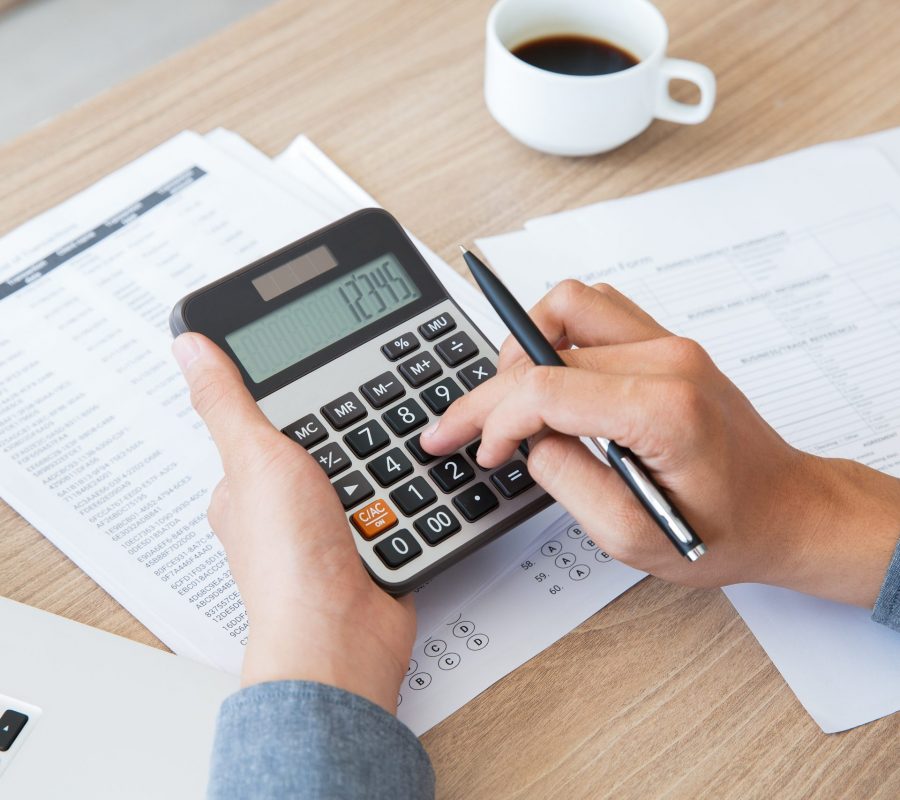A value-added tax (VAT) is a fee assessed against businesses at each step of the production and distribution process, usually whenever a product is resold or value is added to it. A VAT is levied on the difference between the purchase cost of an asset and the price at which it can be sold. Producers and distributors typically pass the cost of the VAT on to the final consumer in the form of price increases. Tax is added to a product’s price each time it changes hands until delivery to the customer takes place when the final tax is paid. The value-added tax falls under the general category of a consumption tax, meaning taxes on what people buy rather than on their earnings, savings, or investments. VAT has also been
Referred to as a sort of national sales tax, though it functions very differently. Sales tax is imposed on the total retail price of the item sold, while VAT tax is imposed on the value added at each stage of production and distribution. And though more complicated than sales tax, value-added tax systems have more checks against tax fraud because the tax is assessed at more than one point in the distribution process.

It is a percentage-wise tax on the value added to a commodity or service as each constituent stage of its production and distribution is completed. VAT may be classified in three ways:
(I) on the basis of coverage of stages – throughout the production and distribution stages, or confined to limited stages – manufacturing plus wholesale, or wholesale plus retail;
(ii) On the basis of the method of calculation – tax credit method, subtraction
Method, and addition method; and
(iii) On the basis of tax treatment of final product capital goods such as machinery, equipment, and supplies – the consumption form, the income from, and the product variety. Thus the three broad types of VAT are the gross national product (GNP) type, income type, and consumption type. A consumption-type VAT is an indirect tax. An income type or a GNP type VAT might be considered as a direct tax but a commodity tax cannot be considered so. Consumption type VAT is also considered as an alternative form of ‘sales tax’.
3. The Vat Assessment Process
The process of assessing value-added tax occurs roughly as follows:
4. Basic Characteristics of Value Added Tax
There are three types of value-added tax used around the world; each is different in the ways that taxes on investment (capital) expenditures are handled. The most common is the consumption method, which allows businesses to immediately deduct the full value of taxes paid on capital purchases. The second is the net income method, which allows the gradual deduction of VAT paid on capital purchases over a number of years, much like depreciation. The third type, gross national product method of value-added tax, provides no allowance for taxes paid on capital purchases. The name of this type of tax is derived from the fact that the tax base is approximately equal to private GNP. The consumption method is most favored among general populations because it most equally taxes income from labor and capital and promotes capital formation.
In theory, value-added tax systems with a uniform rate are neutral to all forms of productive input. However, countries across the world have had to modify the VAT system with multiple rates and exemptions to meet political, economic, and social needs. Most nations do not assess any tax on necessities such as food, medicine, and shelter. And because of the difficulty in computing value-added tax, professional services such as banking, accounting, and insurance are often exempt. The largest variation from uniform tax rates is the zero tax rates on exports. Since taxes will likely be assessed at a product’s destination, many do not impose a tax on the final selling price of exports. To compensate, the VAT is applied to imported products. Hence, countries working together seek a more balanced trade.
5. Basis for VATs
By the method of collection, VAT can be accounts-based or invoice-based. Under the invoice method of collection, each seller charges the VAT rate on his output and passes the buyer a special invoice that indicates the amount of tax charged. Under the accounts based method, the tax is calculated on the value-added, which is measured as a difference between revenues and allowable purchases. Most countries today use the invoice method, the only exception being Japan, which uses the accounts method. By the timing of collection, VAT (as well as accounting in general) can be either accrual or cash-based. Cash basis accounting is a very simple form of accounting. When a payment is received for the sale of goods or services, a deposit is made, and the revenue is recorded as of the date of the receipt of funds—no matter when the sale had been made. Cheques are written when funds are available to pay bills, and the expense is recorded as of the cheque date—regardless of when the expense had been incurred. While accrual is more complex than cash basis accounting, it provides much more information about the business. The accrual basis allows to match revenues to the expenses incurred in earning them, giving one more meaningful financial report.
2022 © Copyright All Rights Reserved Legal Solution BD – Website Developed by W3 Techniques